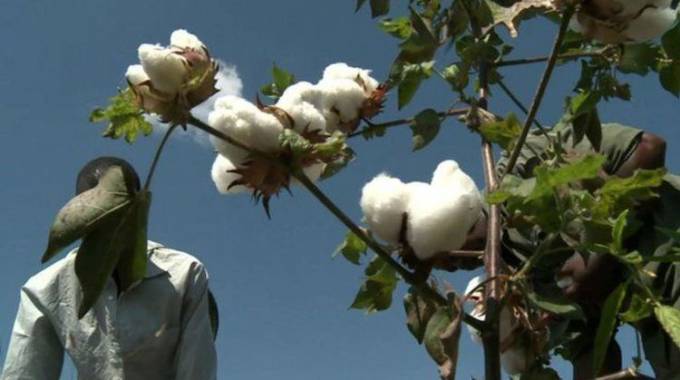
Martin Kadzere
In Muzarabani, a relatively flat and extremely hot district situated in north-eastern Zimbabwe, in Mashonaland Central, a cotton farmer Raymond Rukodzi (not his real name) is thinking of quitting an industry that has sustained his livelihood for decades.
His only hope, like many other cotton farmers around the country, is to be partly paid in foreign currency in the forthcoming season in light of the continued depreciation of the local currency.
“What has sustained us for years are earnings from cotton,” Mr Rukodzi, a beneficiary of free State inputs, said.
“This inflationary environment, it will be unfair for us to be paid in local currency, especially given the rate at which it (the local currency) is losing value. How do I save the money for future use?
“It is our hope that the authorities allow merchants to pay in a currency that preserves value, otherwise there would be no reason for me to continue toiling but without reward. Next season I am out of the game.”
Since the country scrapped the 1:1 peg between the bond note — a surrogate currency — and the US dollar in February last year, the official exchange rate has sharply declined.
It is trading at around US$1: $65 on the black market for high-volume transactions.
Prices of most goods and services track parallel market rates.
Farmers are thus pushing to be paid in a stable currency to support their seasonal business.
The cotton season has not yet opened as Government is yet to announce this year’s producer price.
The season normally starts at the end of April and runs until September.
Recently, the Ministry of Finance and Economic Development said it was considering a subsidy on producer prices after lint prices tumbled on the international market due to the coronavirus.
Ginners have warned that they might be pushed out of business if they fail to get a subsidy.
On Thursday, industry players agreed to start preparations for the marketing season while awaiting the announcement of new producer prices.
During the meeting, which included ginners, the Agriculture Marketing Authority (the regulator) and Reserve Bank of Zimbabwe, a proposal was made to increase foreign currency retention thresholds by the merchants from 50 percent to 100 percent.
This would enable ginners to pay farmers in foreign currency in light of subdued international lint prices.
“It was proposed that ginners retain 100 percent foreign currency. That will give them more space to partly pay farmers in hard currency. The RBZ agreed in principle and a formal request would be made in this regard,” said an official who was part of the high-level private meeting.
Tobacco farmers are paid 50 percent in foreign currency, while the other half is in local currency at the prevailing official exchange rate.
Artisanal gold producers receive 100 percent foreign currency, while big companies are entitled to 70 percent.
Last year, cotton farmers were paid US$10 for 100 kilogrammes, while the remainder was paid in local currency.
“While we appreciate that we are getting free inputs from Government, I don’t think there would be many takers next year if the price is not good,” said a farmer from Chiweshe (Mazowe District), who declined to be identified.
“Like tobacco farmers, we are producing a crop that generates foreign currency and we find no reason of not being paid in US dollars.”
About 90 percent of lint produced from raw cotton is exported.
Cotton Producers and Marketers’ Association chairperson Mr Stewart Mubonderi told The Sunday Mail Business that they are already lobbying for farmers to be paid in forex.
Zimbabwe earned an estimated US$25 million from cotton exports last year compared to US$85 million the previous year after yields were badly affected by drought.
Most farmers are unwilling to be paid through mobile money platforms, which charge them substantially for transacting.
“So, effectively, I can only spend about 50 percent of what I get, which is ridiculous,” Sharon Ngirazi, a farmer contracted by a private company in Gokwe said.
Analysts believe that failure to address the situation could lead to “another collapse” of the industry.
Cotton production peaked in 2011 when output rose to 352 000 tonnes after global prices recovered following the global financial crisis.
However, prices progressively plummeted.
In 2015, only 28 000 tonnes were harvested, which represents the lowest in nearly two decades.
The decline was attributed to low prices and poor funding from merchants.
“Cotton provides livelihoods to thousands of households and anything that may disrupt its production must be avoided,” said Enoch Saramu, an analyst with a local research firm.
Last year, nearly 300 000 farmers were contracted by both Government and private players.
It is forecast that this year’s output would be better than 74 000 tonnes produced last year despite the poor rains.
